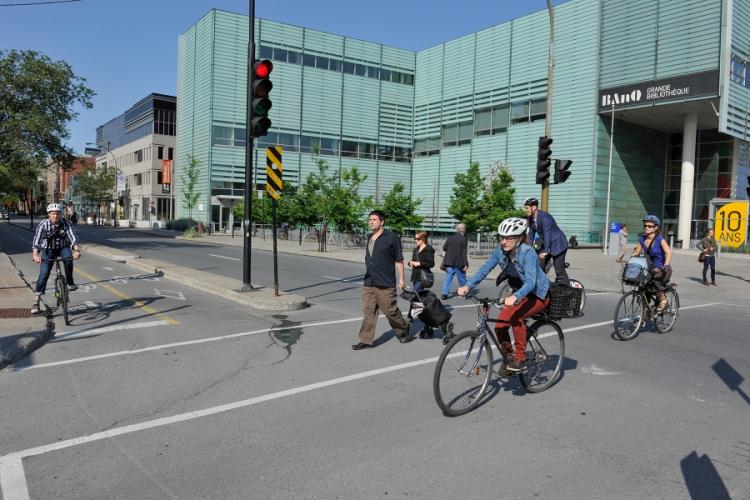There is a pervasive cycling culture in Montreal; dozens of bike shops are dotted throughout the city and there is a persistent set of cyclists who are dedicated to riding their bikes even during the winter months. Despite the presence of a thriving cycling culture, active transportation infrastructure leaves something to be desired in Montreal. The city has space to improve upon the pre-existing set of bike paths and should be doing more to increase the amount of bicycles on the road.
The benefits of active transportation, which include reducing the amount of traffic on major roads and decreasing fuel consumption, demonstrate that it is time for cities to promote this type of transit. In order to do so, city planners must consider the factors that deter people from cycling in the first place, one of which is the danger associated with riding a bicycle. According to a Montreal police report, the amount of cyclist deaths in the city has gone up by 50 per cent.
Many people are not aware that cycling is an activity that tends to have disproportionate numbers of male and female riders. A recent Ryerson University study found that by providing increased safe cycling infrastructure, the amount of female riders is likely to increase—challenging the predominantly male cycling culture. By making overall improvements to the cycling transport system, the City of Montreal can create a more inclusive cycling space that encourages all genders to use active transportation for their daily commutes.
The element of risk associated with urban cycling is something that—while important to both sexes—has a greater effect on females. A Deakin University study on female participation in cycling has shown that women are less likely to engage in risk-taking behaviour, and therefore show less of a preference for cycling than men. The 2011 National Household Survey found that only 36 per cent of cyclists in the Montreal area are female, demonstrating that cycling is indeed a male dominated method of transportation. Since women are more likely to be held back by the dangers associated with cycling, improving cycling infrastructure is crucial. Creating safer infrastructure will make cycling more appealing to those who do not currently consider it to be a viable method of transportation.
It is not that women are less partial to cycling, but that the current infrastructure does not provide cyclists—particularly females—with a desirable level of safety. The city has expressed a desire to create a safer environment for cyclists with the release of plan called Vision Zéro, which promises to target certain unsafe intersections and reduce the amount of cyclist injuries. No timeline has yet been presented, however, and certain aspects are still vague. For example, the plan states one of their short-term actions will be to “develop a bicycle plan based on cyclist safety,” but gives no information on what this entails. While the creation of this plan is a step in the right direction, the city will need to offer more details before cyclists can be assured that their safety is a priority.
Because of the insufficient cycling infrastructure and the disproportionate numbers of male cyclists in Montreal, certain women’s cycling groups, such as Vélobabes, are currently working to foster a more female-inclusive cycling community without making changes to the built environment. Started in 2014, Vélobabes is a bi-monthly social ride club open to female-identifying cyclists. Despite the wide reach of Montreal’s bike culture, this is one of the only female-centric cycling clubs easily found with a Google search. If the city was to prioritize the safety of bicyclists, studies show that there would there be a greater female presence in the Montreal bike scene. It’s time for Montreal to prove that this is the case.
While Montreal is taking a step towards safe cycling infrastructure with Vision Zéro, a concrete plan with realistic deadlines needs to be shared with the cycling community. The city has expressed that it values the safety of cyclists, but has not yet acknowledged the gender disparity that exists among them. Safe active transportation has the potential to benefit users—regardless of their gender—and should be an area of focus for the city. According to a Rutgers University study, more cyclist-friendly cities, including several in Germany and the Netherlands, do not report a large difference in numbers between male and female cyclists. This demonstrates that a more equitable cycling system is possible. By developing safer cycling infrastructure, Montreal can increase not only the total number of cyclists on its roads, but the gender parity among this group as well.








